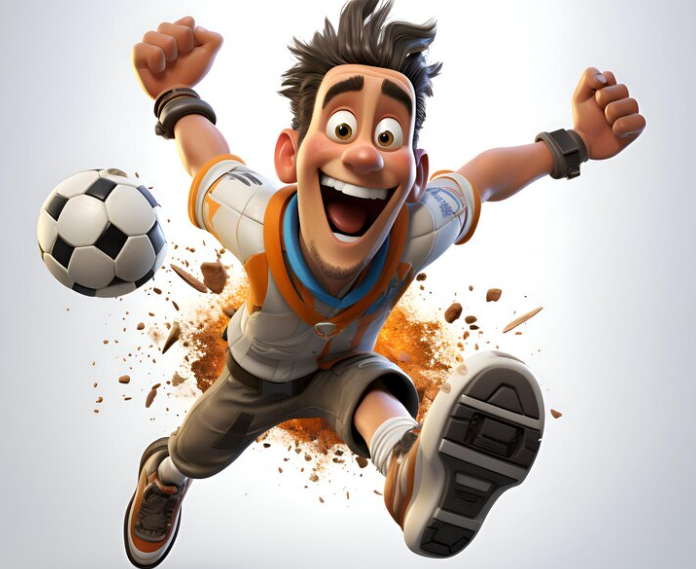Soccer players all over the world have been enthralled with the challenge of mastering the art of a free kick, particularly in the incredibly realistic 3D simulations. The highly realistic experience of 3D Free Kick Classic and its variants, like 3D Free Kick World Cup 18, forces players to hone their timing and accuracy under mounting pressure. These games are a real test of skill, providing amusement as well as a worthwhile challenge, especially for players who want to hone their virtual soccer skills.
A remarkable balance between simplicity and complexity has been achieved in these games. Clicking, dragging, and precisely releasing the ball are simple mechanics, but the game’s increasing difficulty adds an intriguing strategic element. The goals are open in the beginning, but as players advance, they encounter a wall of defenders and a more formidable goalkeeper. The difficulty rapidly increases, giving each shot a sense of importance. Each missed shot increases the tension as players have three chances to score. The game is a great analogy to the intensity experienced during real-life matches because it requires not only accuracy but also agility and mental focus.
Biodata Table for 3D Free Kick Game Developers
| Name | Developer: Famobi |
|---|---|
| Website | CrazyGames |
| Release Date | June 2018 |
| Genre | Sports, Soccer, Free Kick |
| Platforms | Browser (desktop, mobile, tablet), App Store (Android) |
| Features | 3D graphics, precision controls, competitive scoring system |
| Ratings | 8.6/10 (183,978 votes) |
| Key Mechanics | Free kick scenarios, shoot with mouse swipe, dynamic obstacles |
A community of enthusiastic gamers has grown over time as a result of the 3D Free Kick series, ready to challenge and compare their skills. The obstacles players must overcome increase with each level. They must first aim and shoot the ball into what appears to be an open goal. But as the game goes on, the goalie’s positioning improves and a wall of defenders the size of a human appears to block shots. Players quickly learn that every shot requires not only a high degree of accuracy but also knowledge of physics, including how the ball spins, arcs through the air, and how small adjustments can make or break the ideal shot.

Numerous professional athletes and sports fans have taken notice of this virtual soccer challenge, frequently comparing the game’s mechanics to those they encounter in actual matches. Some soccer players even train their minds by playing digital games like 3D Free Kick, which helps them focus and perform better under pressure. The control, timing, and decision-making required for these games have given players an alternate way to practice crucial soccer skills, even though nothing can replace the experience of playing on a real field.
The accessibility of the game is the reason for its enormous popularity. 3D Free Kick can be played anytime, from almost anywhere, unlike traditional soccer training, which calls for a field, teammates, and occasionally expensive equipment. Players can practice their free kicks at home or on a bus, guaranteeing that they are constantly getting more accurate. As a result, soccer is now more widely available to anyone with an internet connection, increasing its appeal on a global scale.
3D Free Kick’s Effect on Soccer Culture
The emergence of online soccer gaming has resulted in a highly adaptable change in the way soccer fans engage with the game. Soccer fans can now enjoy their favorite activity without having to kick a ball outside thanks to 3D Free Kick, which has brought the sport into the digital era. It has made it simpler for people of all ages and ability levels to enjoy the excitement of soccer by dismantling the conventional barriers to entry. Through the use of cutting-edge 3D technology, the game accurately captures the thrill of actual soccer matches as well as the feel of free kicks.
One significant turning point can be observed in the increasing incorporation of virtual games into soccer culture. By bringing soccer closer to the digital sphere, these games have given both players and fans a new perspective. They are now active participants who can participate in the sport at any time, rather than merely passive spectators. It also gives athletes a means of maintaining their skills even when they are unable to play, adding a level of convenience and adaptability that traditional training simply cannot match.
It’s interesting to note that discussions about the relationship between video games and real sports are starting to include 3D Free Kick. As both gamers and professional athletes continue to investigate how digital simulations can aid in honing and training real-world skills, these games are now viewed as tools for development rather than just entertainment. Athletes are increasingly incorporating gaming into their preparation routines, and the lessons gained from these virtual simulations are now incorporated into many coaching strategies.
The way people experience soccer has changed as a result of the collaboration between the virtual and physical worlds, becoming more inclusive and accessible. A stadium or a sizable team are no longer necessary to experience the thrill of the game. Rather, players can get fully involved in the action at any time, honing their abilities and feeling the rush of converting that crucial free kick.
This change signifies a new way of engaging with their favorite sport, particularly for younger fans. They can actively participate in the game rather than just watch it, learning the nuances of penalty shootouts and free kicks. This offers educators and parents a thrilling chance to get kids involved in a sport that demands talent, focus, and commitment.
